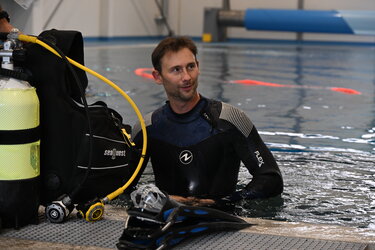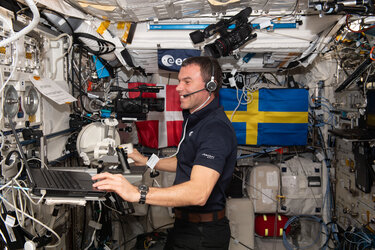Accept all cookies Accept only essential cookies See our Cookie Notice

About ESA
The European Space Agency (ESA) is Europe’s gateway to space. Its mission is to shape the development of Europe’s space capability and ensure that investment in space continues to deliver benefits to the citizens of Europe and the world.
Highlights
ESA - United space in Europe
This is ESA ESA facts Member States & Cooperating States Funding Director General Top management For Member State Delegations European vision European Space Policy ESA & EU Responsibility & Sustainability Annual Report Calendar of meetings Corporate newsEstablishments & sites
ESA Headquarters ESA ESTEC ESA ESOC ESA ESRIN ESA EAC ESA ESAC Europe's Spaceport ESA ESEC ESA ECSAT Brussels Office Washington OfficeWorking with ESA
Business with ESA ESA Commercialisation Gateway Law at ESA Careers Cyber resilience at ESA IT at ESA Newsroom Partnerships Merchandising Licence Education Open Space Innovation Platform Integrity and Reporting Administrative Tribunal Health and SafetyMore about ESA
History ESA Historical Archives Exhibitions Publications Art & Culture ESA Merchandise Kids Diversity ESA Brand Centre ESA ChampionsLatest
Space in Member States
Find out more about space activities in our 23 Member States, and understand how ESA works together with their national agencies, institutions and organisations.
Science & Exploration
Exploring our Solar System and unlocking the secrets of the Universe
Go to topicAstronauts
Missions
Juice Euclid Webb Solar Orbiter BepiColombo Gaia ExoMars Cheops Exoplanet missions More missionsActivities
International Space Station Orion service module Gateway Concordia Caves & Pangaea BenefitsLatest
Space Safety
Protecting life and infrastructure on Earth and in orbit
Go to topicAsteroids
Asteroids and Planetary Defence Asteroid danger explained Flyeye telescope: asteroid detection Hera mission: asteroid deflection Near-Earth Object Coordination CentreSpace junk
About space debris Space debris by the numbers Space Environment Report In space refuelling, refurbishing and removingSafety from space
Clean Space ecodesign Zero Debris Technologies Space for Earth Supporting Sustainable DevelopmentLatest
Applications
Using space to benefit citizens and meet future challenges on Earth
Go to topicObserving the Earth
Observing the Earth Future EO Copernicus Meteorology Space for our climate Satellite missionsCommercialisation
ESA Commercialisation Gateway Open Space Innovation Platform Business Incubation ESA Space SolutionsLatest
Enabling & Support
Making space accessible and developing the technologies for the future
Go to topicBuilding missions
Space Engineering and Technology Test centre Laboratories Concurrent Design Facility Preparing for the future Shaping the Future Discovery and Preparation Advanced Concepts TeamSpace transportation
Space Transportation Ariane Vega Space Rider Future space transportation Boost! Europe's Spaceport Launches from Europe's Spaceport from 2012Latest

Before and after space
Thank you for liking
You have already liked this page, you can only like it once!
Marcus Wandt from Sweden, left, and Sławosz Uznański-Wiśniewski from Poland, right, during a visit to Axiom Space’s Mission Control Center in Houston, USA, in 2024.
A year ago, Marcus became the first of a new generation of European astronauts to arrive to the International Space Station on a commercial spaceflight with Axiom Mission 3 (Ax-3). Sławosz is now scheduled to fly to the same destination on Axiom Mission 4 (Ax-4) no earlier than spring 2025.
Europe is teaming with a commercial space company to show how fast-track, short-duration missions can generate good science, outreach and education for a better life on Earth.
Marcus and Sławosz first met when they became two of the 17 members of the new ESA astronaut class chosen from over 22 500 applicants from across ESA Member States in November 2022.
Sławosz saw Marcus launching to space from NASA’s Kennedy Space Center and then spent the duration of his three-week mission, called Muninn, in the Columbus Control Centre in Germany. Both project astronauts have been assigned the role of mission specialists.
This was a unique opportunity for Sławosz to experience fully his fellow project astronaut’s mission while working full shifts next to operators on consoles, taking part in conferences with astronauts and observing a similar short-term mission to the one he will take part in, called Ignis.
Marcus Wandt spent 20 days in orbit conducting microgravity research, technology demonstrations and educational activities with the support of ESA and the Swedish National Space Agency.
Sławosz Uznański-Wiśniewski is currently following an intensive training programme to adapt to the challenges of living and working in space at Axiom Space, NASA, and SpaceX facilities in the USA, as well as at the European Astronaut Centre in Cologne, Germany. The Ignis mission includes an ambitious technological and scientific programme, supported by ESA, the Polish Ministry of Economic Development and Technology (MRiT), and the Polish Space Agency (POLSA).
These short-duration flights are also a first step to prepare for the commercialisation of low Earth orbit in a future without the International Space Station. Using commercial companies to get access to orbit in record time is a very efficient way of running more European science in space.
-
CREDIT
Axiom Space -
LICENCE
No ESA licences available

Sławosz Uznański-Wiśniewski in Columbus module mockup

Sławosz Uznański-Wiśniewski training in Columbus

Sławosz Uznański-Wiśniewski, Ax-4 mission specialist

Sławosz Uznański in ESA's Neutral Buoyancy Facility















 Germany
Germany
 Austria
Austria
 Belgium
Belgium
 Denmark
Denmark
 Spain
Spain
 Estonia
Estonia
 Finland
Finland
 France
France
 Greece
Greece
 Hungary
Hungary
 Ireland
Ireland
 Italy
Italy
 Luxembourg
Luxembourg
 Norway
Norway
 The Netherlands
The Netherlands
 Poland
Poland
 Portugal
Portugal
 Czechia
Czechia
 Romania
Romania
 United Kingdom
United Kingdom
 Slovenia
Slovenia
 Sweden
Sweden
 Switzerland
Switzerland
























